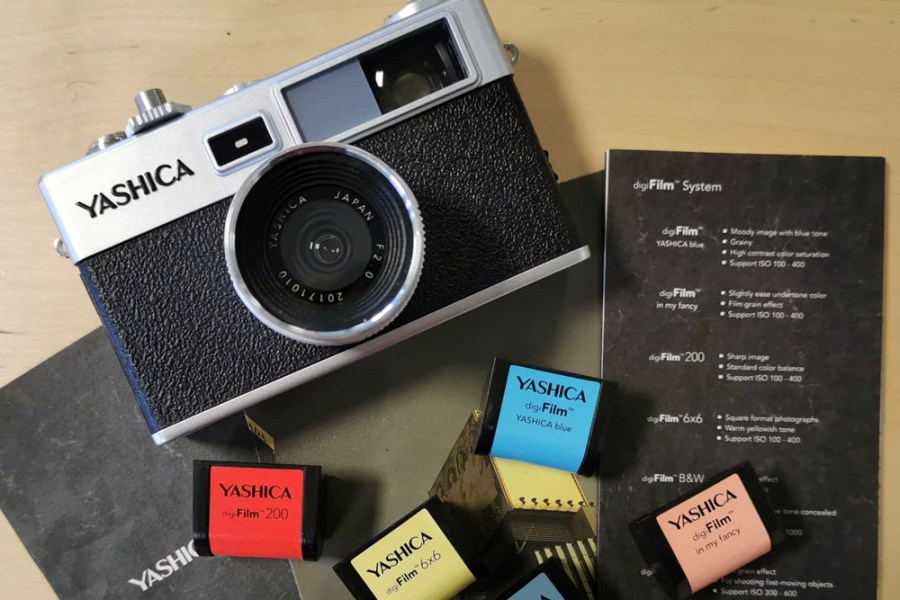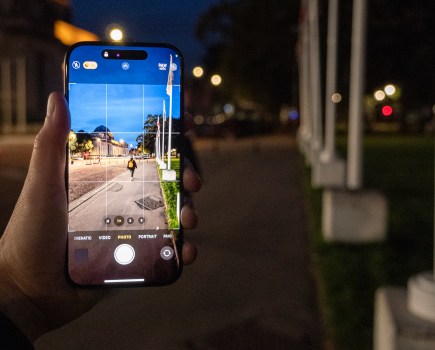When you buy a camera today, you’re faced with a choice of several main brands, and almost every brand will sell you a fully functioning, well designed, and high-performing digital camera, but as you’ll find out with this list, it’s not always been that way, as we highlight the worst digital cameras ever released.
There have been a number of cameras released over the years, designed to challenge the status quo, or add new innovations. As you’ll see, very few of them, in fact, almost all of these have failed in one way or another.
So without further ado, lets see what some of the worst digital cameras of all time look like:
1. Lytro “Light Field” Camera
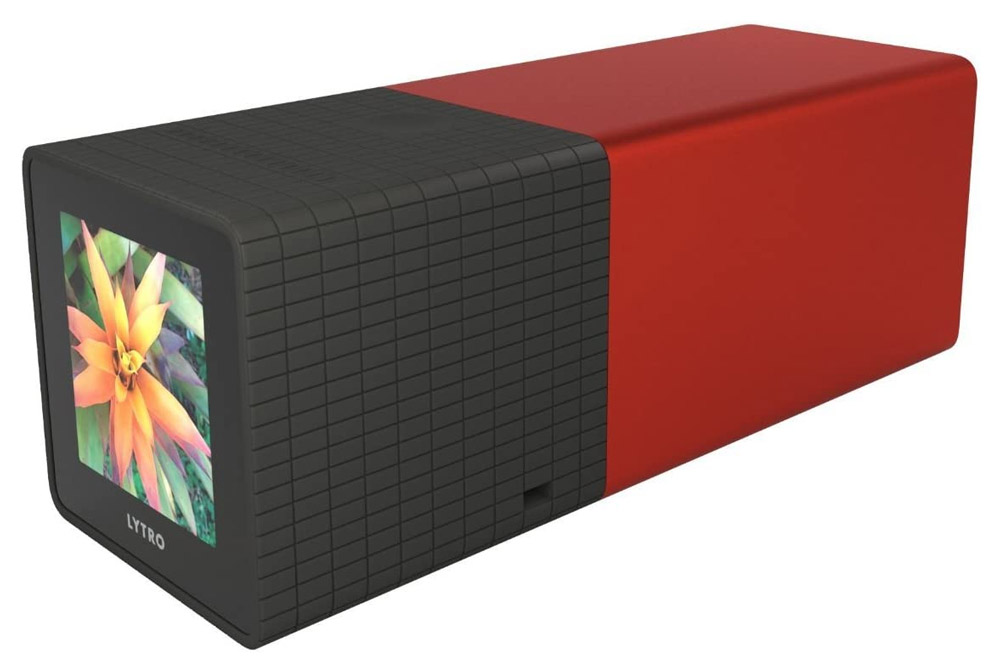
Lytro Light Field Camera, PR image
It’s the kind of thing you used to see in Sci-Fi movies, notably Blade Runner, the ability to change the focal point of an image after it’s been taken. And whilst this is definitely an interesting and innovative technology, it’s implementation, and success certainly didn’t pan out the way Lytro hoped.
Released in 2012 this Lytro Light Field Camera was a neat idea in principle, letting you adjust the focus point after you’d taken the photo, and it was certainly a unique camera with one of the oddest designs of all time. But with an output that resulted in roughly 1MP images, and one of the only ways of viewing the images through a now-defunct website, this is one to avoid.
As a demonstration of the technology, it worked, but the image quality and low-resolution made it more of a toy, than a serious digital camera. Roll on version 2…
2. Lytro Illum 2
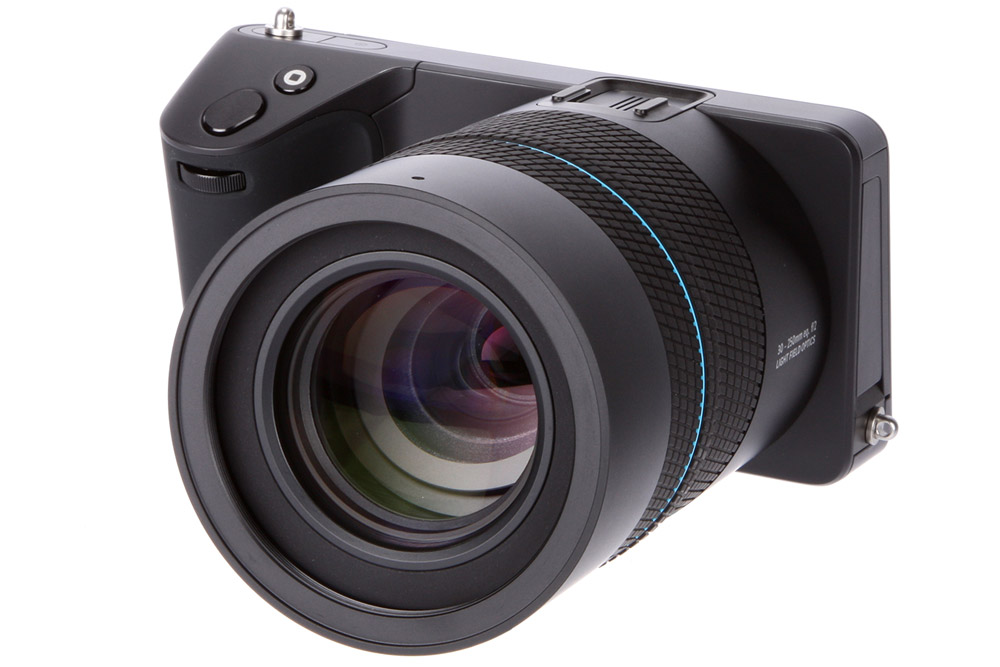
Lytro Illum – with large lens, AP
This was the “professional” version of a Lytro light field camera, the Lytro Illum, with more megapixels or “megarays” and higher image quality. Yet it also forced you to share your images through the Lytro website, which now no longer exists, and gone too are your photos, or any way of sharing them, without first exporting them as a YouTube video.
This camera featured a more serious design, although it was still quite odd, with a sloped rear, and slightly tilting screen.
Light Field Photography – what’s next for Light field photography? Well, there have been other attempts, such as the K-Lens, but this unfortunately hasn’t come to fruition, with the Kickstarter being cancelled due to financial costs in February 2022.
If you want something similar, then have a look at Panasonic’s Lumix cameras with 4K/6K photo as these offer post-focus adjustment.
3. Pentax K-01
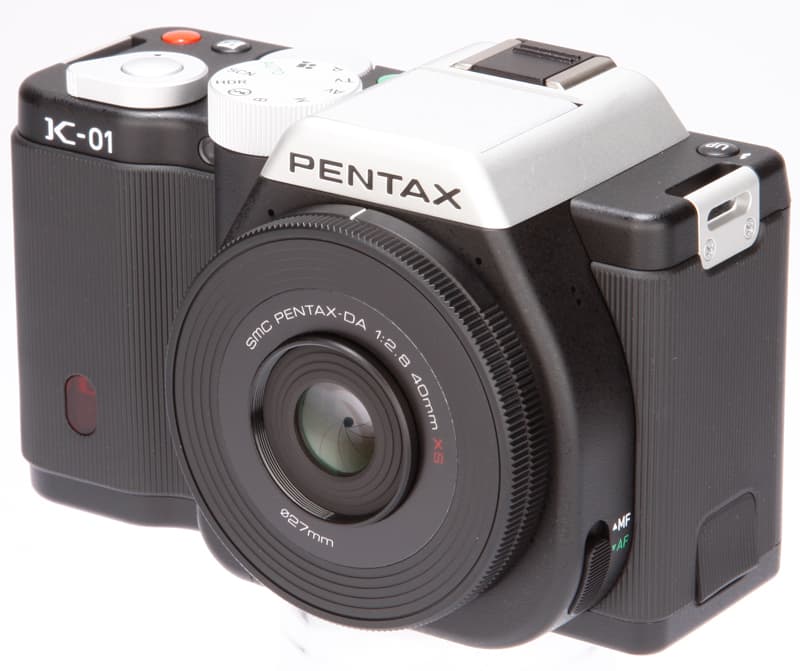
Pentax K-01 with 40mm XS pancake lens
With the Pentax K-01, Pentax attempted to release a mirrorless camera, using the same SLR lens mount as their DSLR cameras, the K-Mount, so the lens mount and body thickness of the camera was the same size, but the camera was missing the optical viewfinder, relying on just the screen for composing your image.
Whilst this sounds fairly reasonable today, back in 2012, contrast detection focus was much slower on this camera. Oh, and the camera looked so bad that many referred to it as toy-camera. The designer, Marc Newson, also took the opportunity at the launch event to say that a digital camera had never been designed by a designer before. Which as you can guess, went down like a tonne of bricks (much like the styling of the Pentax K-01).
Also worth a mention: Pentax’ other failed mirrorless camera system, the Pentax Q system, featuring the same size sensor as a compact camera, there was little benefit to be found in using this instead of a compact camera.
Needless to say, Pentax are committed to Digital SLRs and aren’t interested in pursuing the mirrorless camera market.
4. Yashica digiFilm Camera Y35

Yashica DigiFilm Camera Y35, with digifilm(s) – Photo: Joshua Waller
This is supposed to be a digital version of the Yashica Y35 film camera, and for some reason everyone expected (oddly) that the digital version would be amazing, but it turned out that a $130 (US dollar) digital camera is not going to give you a premium camera.
As expected, when this Kickstart backed camera arrived, it was indeed a “cheap” toy camera – I’m not sure why anyone expected anything else, when the camera had a price of around $130.
The Yashica Y35 digital camera used different “digital films” and each one gave you a different look. For example, if you wanted to shoot in black and white, you had to load the “Black and white” digifilm into the camera, then all your photos were in black and white, until you switched to a different “film”.
Image quality was decidedly average, with 14MP images looking like they’d been resized from a 5MP sensor, but what can you expect from what’s obviously a toy camera?
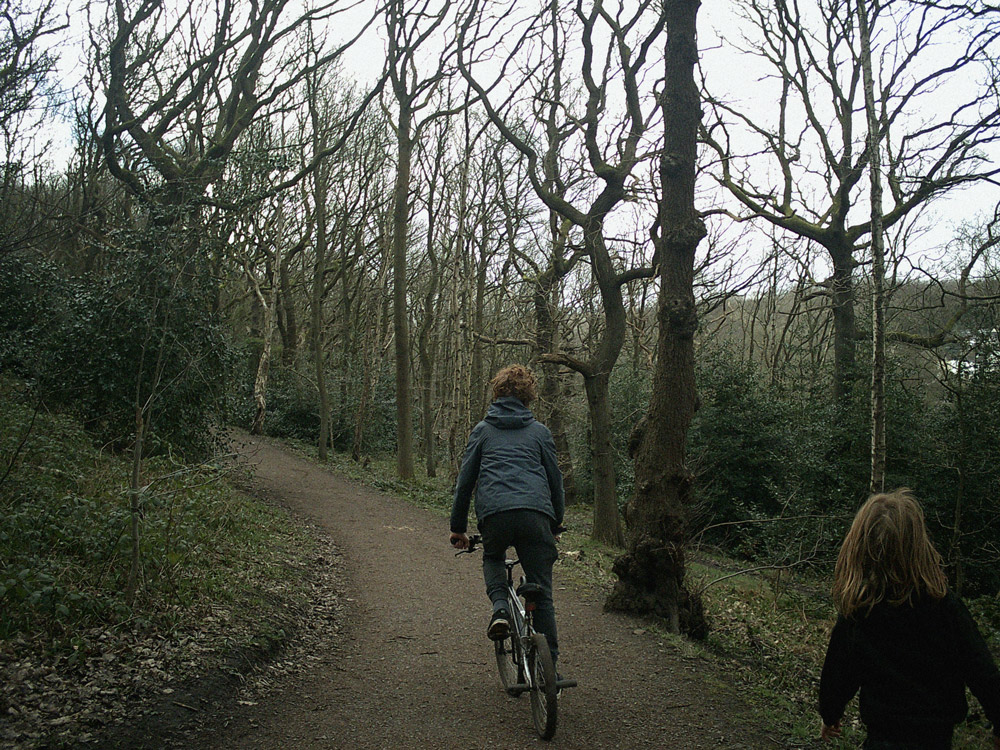
Yashica digiFilm 1600 – Sample photos, resized to 1000px, click to enlarge, Copyright: Joshua Waller
These aren’t very rare, but are often vastly overpriced on ebay, and not particularly worth the money unless you can grab a cheap one. If you want to be entertained, have a look at some of the YouTube videos on the Yashica digiFilm Camera Y35.
5. Ricoh GXR
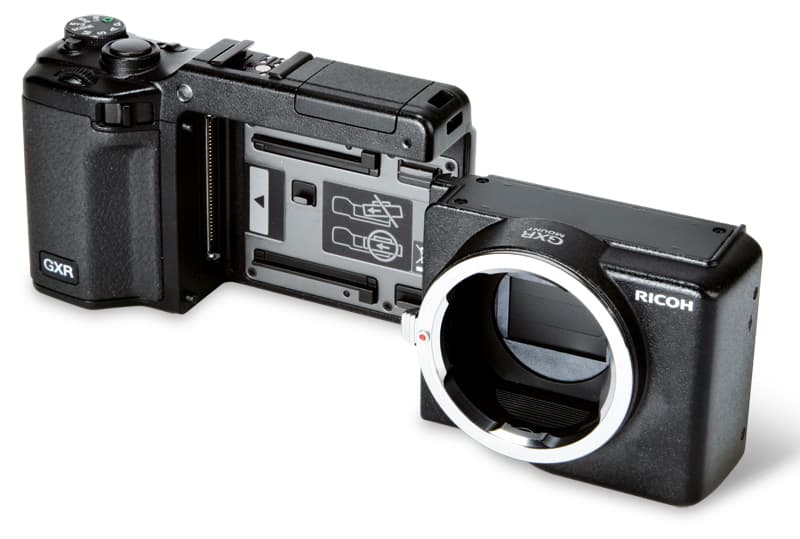
Ricoh GXR Mount A12 back
The Ricoh GXR modular camera system was an interesting take on the idea of being able to change your lens, except with the GXR system – you use the same body section with battery and screen, and can swap out the camera lens and sensor unit.
This meant that the lens and sensor unit could feature different sensor sizes, along with different matching lenses, so there was a small sensor 10x optical zoom unit, as well as APS-C sensor units with a number of different lens options.
One of the most interesting units had a Leica M-Mount and APS-C sensor, like a strange frankenstein mirrorless camera that gave you access to Leica glass, at much more affordable prices when compared to a genuine Leica rangefinder.
There are lots of these available on ebay if you wanted to give it a try, but overall it made for a fairly clunky, and bulky system, unless you stuck to the small sensor units.
6. Samsung Galaxy NX
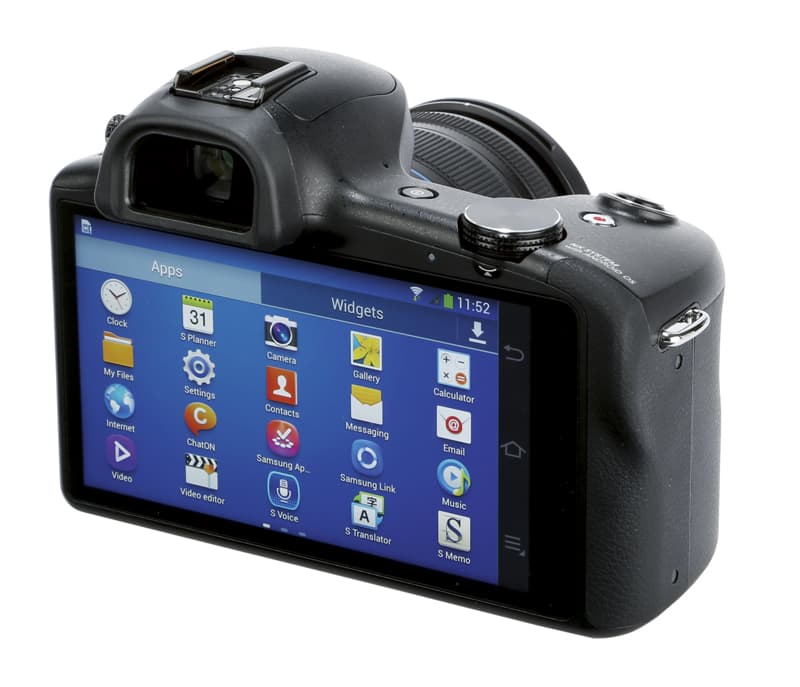
The Samsung Galaxy NX
Whilst the Samsung Galaxy NX is not the first camera with Android built-in, and not the last (link to Zeiss ZX1), it was one of the first mirrorless cameras with Android built-in. And with a huge (at the time) 4.8 inch screen, it seemed like a good idea, but early cameras suffered from bugs that made it slower and more difficult to use than a standard camera.
Samsung has completely abandoned the Samsung NX mount, so there are no longer any new cameras or lenses, and I wouldn’t like to guess when the last Android update was made available for the Samsung Galaxy NX camera. This is a camera that only hardcore camera historians would want to own.
7. Polaroid Socialmatic
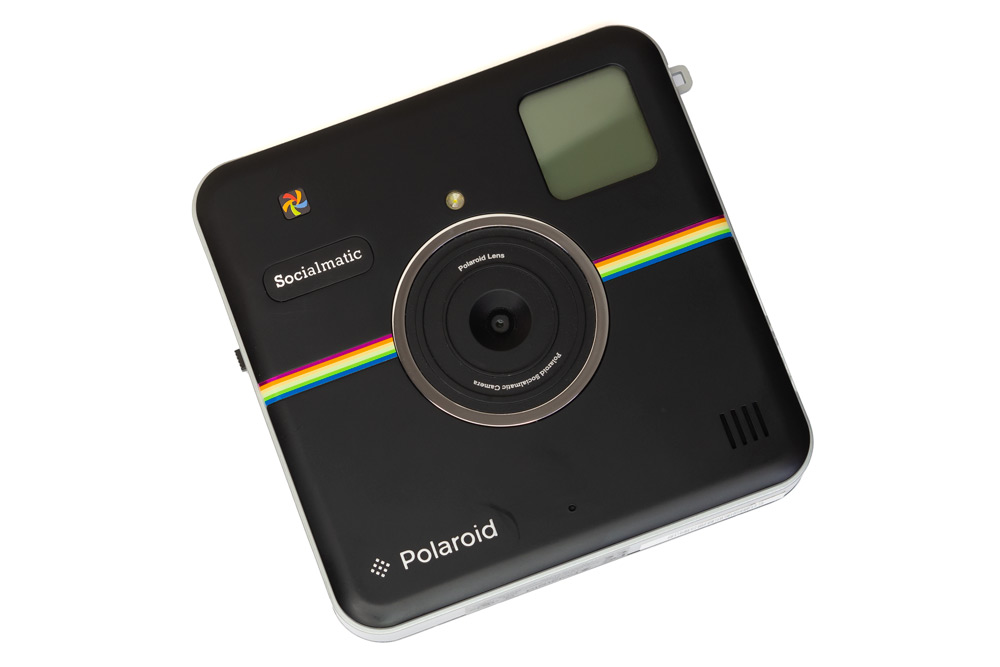
Could this be the worst digital camera of them all? Polaroid Socialmatic digital camera, Image: JW/AP
The Polaroid Socialmatic was what you might get if you asked someone to design a camera based on the Instagram logo.
It was another camera with Android (v4.4) built-in, but this model also features a built-in Zink printer. The camera was large, awkward to use, and build quality issues meant that the battery in the camera failed after some time, rendering it almost entirely useless.
As you might have seen so far, putting Android into a digital camera may seem like a good idea – with the possibility of using all the great Android apps, and photo editors, however, the reality quickly changes, when you come to use these cameras. Not only is the Android version normally out-of-date by the time you buy it, but it often ends up neglected going forwards, meaning it has built-in obsolescence right from the moment it is on sale.
Also worth a mention:
- Polaroid iZone – with an “18mp” sensor, that in fact turned out to be a 5mp sensor.
- Polaroid Cube – this was a great little action camera, but battery woes could render them useless.
I could carry on with a whole section dedicated simple to terrible digital cameras by “Polaroid” such as the Polaroid mirrorless camera that was simply “copy and paste” of the Nikon 1 series cameras, and following a lawsuit from Nikon, was never released, but I’d quickly run out of space.
8. OMGLife Autographer

The OMGLife Autographer was a truly awful camera – Image courtesy Selfridges
Released in 2014 – One of the first “life” cameras, the OMGLife Autographer was said to be “the worlds first wearable camera” and unfortunately it wasn’t the last.
It was designed to automatically take photos when life events happened. However, it was unpredictable, unreliable, and wouldn’t always capture the moments you wanted, perhaps that’s why they include OMG in the title, as you were often left thinking “Oh My God” what is going on?
Image quality was particularly terrible as well. As you might have guessed, it wasn’t very successful and the company doesn’t exist anymore. That hasn’t stopped other companies trying to produce the same time of product, with mostly similar results. Others include the iON Snapcam, Nikon KeyMission 80, and the Canon IVY REC which is currently on sale for half the RRP (it was also recently off-loaded by wowcher).
9. Sigma SD1 / Merrill

Sigma SD1 DSLR with Foveon sensor
Originally Sigma priced the Sigma SD1 at an eye-watering price of £6199! After a while, they re-released this as the Sigma SD1 Merrill, with a much more reasonable price of £1839 body only.
However, this didn’t make up for the fact that the camera was painfully slow to use, with excruciatingly slow write speeds when shooting raw. In fact, if you used the Sigma SD1 Merrill, and at the same time used a Sony Alpha A77 or A99, or in fact any other camera of the time, you’d be left wondering where your life had gone wrong.
Focus speeds were glacial, switch on times were 4x slower than the competition, and although it offered 5fps continuous shooting, this was for just 7 shots, and if you were shooting raw, it could take another minute for these to be written to the card.
In addition to this slow process, once you’d finished shooting, you had even more pain and misery to follow, as you had to process every raw file in Sigma’s painfully slow Photo Pro software, as the JPEG output was nowhere near good enough.
10. Leica M10-D

Leica M10-D Rear (Press image)
Leica being on something of a roll, decided that making a digital camera that looked like a film camera was a good idea, and in 2018 at Photokina, announced the new Leica M10-D. A digital camera without a screen, it was designed to “bring the unique experience of analogue photography back into the digital world”.
Need I say more? Well, you know how difficult manual focus is? Imagine that without a screen, and the Wi-Fi connection was found to be so unreliable, it made checking images and focus extremely difficult.
If you decided that you’d made a terrible mistake in choosing a camera without a rear screen, you could add an optional Visoflex EVF (electronic viewfinder), letting you use the camera more like a digital camera.
Judging by the difficulty in finding any information on the camera on Leica’s website, perhaps it’s a camera Leica would rather you forget about.
11. Zeiss ZX1

Zeiss ZX1 rear, with Lightroom Mobile (Photo: AW, AP)
The Zeiss ZX1 is a premium camera with a Zeiss Distagon T* 35mm F/2 lens, and a 37.4MP full-frame sensor, capable of producing some great looking images.
It’s based on Android, however, the only app you can run on it is Lightroom Mobile, and while this may seem like a great choice for editing photos on the go, the small sliders are particularly difficult to use on the small 4.3inch screen. Considering this camera is available to buy today, it’s disappointing that the screen is so small, especially considering the camera is relatively large (and expensive).
The camera, despite the price, doesn’t offer any form of optical stabilisation, and speaking of the price, you’ll find it’s available for £5400, considerably more than other full-frame cameras from the likes of Leica.
As with other Android cameras, I wonder how long Zeiss will provide security updates and support for the camera, especially considering they are ultimately a lens company.
12. Casio TRYX TR100 (and variations)
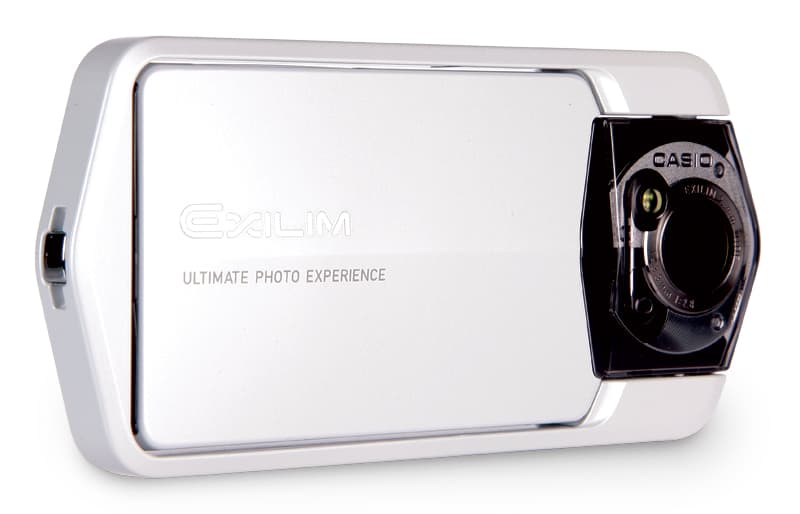
Casio Exilim TRYX EX-TR100 front
The Casio TRYX TR100 was a somewhat unique and unusual digital camera, designed to be a sort of hybrid compact camera, with a touchscreen and movable frame, you could use this in a variety of ways, using the frame as a handle for video, or a stand for selfies.
However, it was noted that the touchscreen, the only real way to control the camera, didn’t work particularly well, and the wide-angle lens was seen as a disadvantage when compared to other compact cameras that featured an optical zoom. The Casio TRYX TR100 wasn’t the only model, with Casio releasing a number of different versions, including the TR200.
Despite Casio being pioneers in the early digital camera market, with the first digital camera with a live-view LCD screen in 1995 the Casio QV-10, and other innovations along the way Casio exited the digital camera market in 2018.
Some of Casio’s highlights include:
- The World’s first digital camera with a ceramic lens, the Casio Exilim S100
- Some of the first high-speed cameras with pre-burst capture, the EX-F1, with 60fps shooting
- Actually impressive battery life on a compact camera, the H15 and H30 offered 1000 shots
Have you owned any of these cameras? Or think another camera should be on this list? Let us know what your least favourite cameras are?
For more great guides to cameras, including good cameras that you should be looking at buying, have a look at our latest buying guides, or the latest reviews.

